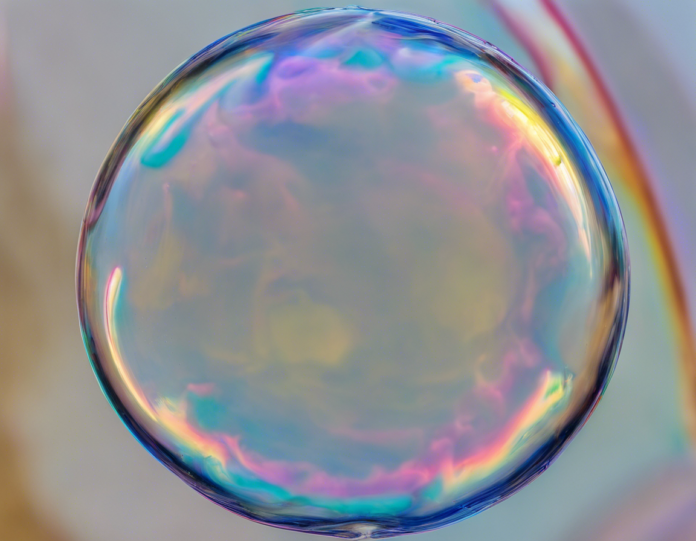Introduction
In the enchanting world of soap bubbles, there exists a captivating interplay of surface tension, pressure, and physics that give rise to the mesmerizing shapes and colors we witness. Among the various aspects governing their formation and stability, soap bubble pressure plays a critical role. Understanding the science behind soap bubble pressure unveils a fascinating realm of fluid dynamics and molecular forces at play. In this article, we delve deep into the intricacies of soap bubble pressure, exploring its significance, factors influencing it, and its role in the remarkable world of soap bubbles.
The Basics of Soap Bubble Pressure
At the heart of a soap bubble lies the concept of surface tension – the property of a liquid that allows it to minimize its surface area, akin to a stretched elastic membrane. Surface tension is responsible for the spherical shape of soap bubbles, as it pulls the liquid molecules inward, attempting to minimize the surface area and thus creating a sphere with the least surface area for a given volume.
The pressure inside a soap bubble, often referred to as Laplace pressure, is a result of the competition between the internal and external forces acting on the bubble. The Laplace pressure in a soap bubble is directly proportional to the surface tension of the liquid and inversely proportional to the radius of the bubble.
Factors Influencing Soap Bubble Pressure
Several factors influence the pressure within a soap bubble, determining its size, stability, and lifespan.
-
Surface Tension: The primary factor influencing the pressure inside a soap bubble is the surface tension of the liquid. Higher surface tension results in higher pressure inside the bubble.
-
Bubble Radius: The size of the soap bubble, specifically its radius, plays a crucial role in determining the Laplace pressure. Smaller bubbles have higher pressure compared to larger bubbles, due to the inverse relationship between pressure and radius.
-
Temperature: Temperature impacts the surface tension of the liquid, consequently affecting the pressure inside the soap bubble. Lower temperatures increase surface tension, leading to higher pressure within the bubble.
-
Presence of Additives: The addition of additives such as glycerin or sugar to the soap solution can alter the surface tension, thereby influencing the pressure inside the soap bubble.
The Role of Pressure in Soap Bubble Stability
The pressure inside a soap bubble is intricately linked to its stability and lifespan. Understanding how pressure affects the behavior of soap bubbles sheds light on their unique characteristics.
-
Structural Integrity: Adequate pressure is essential for maintaining the structural integrity of the soap bubble. The Laplace pressure ensures that the thin film of the bubble remains stable.
-
Bubble Coalescence: Variation in pressure between adjacent bubbles can lead to coalescence, where smaller bubbles merge to form larger ones. This phenomenon is governed by the pressure difference across the bubble surfaces.
Experimental Insights into Soap Bubble Pressure
Researchers and enthusiasts have conducted numerous experiments to explore the intricacies of soap bubble pressure and the underlying principles governing their formation.
-
Pressure Variation with Bubble Size: Experimental studies have reaffirmed the relationship between bubble radius and Laplace pressure, demonstrating how changes in size directly impact the pressure within the bubble.
-
Effects of Temperature: By controlling the temperature of the soap solution, researchers have observed the consequential changes in pressure within the bubbles, highlighting the role of temperature in influencing soap bubble dynamics.
-
Pressure and Bubble Wand Design: The design of the bubble wand can also influence the pressure within the bubbles, with certain shapes and materials leading to variations in Laplace pressure and bubble stability.
Practical Applications and Impact of Understanding Soap Bubble Pressure
While the study of soap bubble pressure may seem whimsical, it holds relevance across various fields and applications, showcasing the practical implications of understanding this phenomenon.
-
Material Science: Insights into soap bubble pressure provide valuable understanding in material science, particularly in studying thin films, emulsions, and surface properties.
-
Medical Industry: The principles of Laplace pressure find application in the medical industry, such as understanding cell membrane dynamics and drug delivery mechanisms.
-
Engineering and Design: Engineers and designers can draw inspiration from soap bubble pressure to optimize structures and designs, considering the impact of pressure differentials on stability and integrity.
Frequently Asked Questions (FAQs)
- What is the relation between surface tension and soap bubble pressure?
-
Surface tension directly influences the pressure inside a soap bubble, with higher surface tension leading to increased pressure.
-
How does temperature affect soap bubble pressure?
-
Temperature impacts the surface tension of the liquid, thereby influencing the pressure inside the soap bubble. Lower temperatures result in higher pressure.
-
Can additives like glycerin alter soap bubble pressure?
-
Yes, additives like glycerin can modify the surface tension of the solution, subsequently affecting the pressure within the soap bubble.
-
Why do smaller bubbles exhibit higher pressure compared to larger ones?
-
The Laplace pressure is inversely proportional to the radius of the bubble, resulting in smaller bubbles having higher pressure.
-
What role does pressure play in soap bubble stability?
-
Adequate pressure is essential for maintaining the structural integrity of soap bubbles, ensuring their stability and longevity.
-
Are there practical applications of understanding soap bubble pressure?
- Yes, insights into soap bubble pressure find applications in material science, medical industry, and engineering, offering valuable understanding in various domains.
In conclusion, the enigmatic world of soap bubbles unveils a captivating interplay of forces, with soap bubble pressure serving as a fundamental element governing their formation and behavior. By delving into the intricate dynamics of pressure, we gain a deeper appreciation for the beauty and complexity of soap bubbles, while also recognizing the practical implications of this phenomenon across diverse fields.

